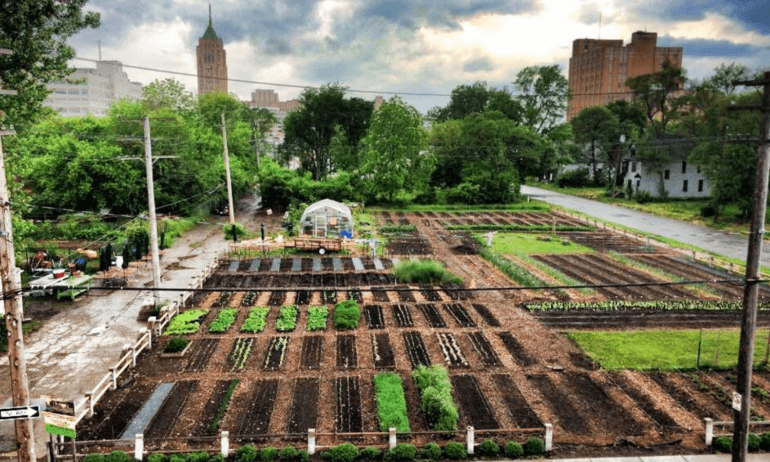The 25-Second Trick For City Blooming
The 25-Second Trick For City Blooming
Blog Article
Little Known Questions About City Blooming.
Table of ContentsThe Definitive Guide to City BloomingCity Blooming Things To Know Before You BuySome Known Details About City Blooming An Unbiased View of City BloomingThe City Blooming Ideas
Interested in growing food for sale in the City of Chicago? Below is a checklist of regularly asked concerns pertaining to the rules and guidelines that growers should think about when planning a city farming project.
The zoning amendment does not customize any various other codes managing composting, building authorizations, buying or leasing City owned residential property, business licenses or environmental contamination. There are existing codes that manage these problems and they stay completely impact and might be suitable to your project. Area yards are generally owned or managed by public entities, civic organizations or community-based companies and kept by volunteers.
Urban ranches expand food that is meant to be marketed, either on a nonprofit or for-profit basis. Due to their industrial function, urban farms call for a company license.
The Only Guide for City Blooming
The quantity of compost product can not surpass 25 cubic backyards at any offered time according to the standards in 7-28-715 of the City's Municipal Code. Because the soil at most brand-new yard sites needs amending, garden compost, dirt, timber chips, or other products can be acquired to build or improve the expanding area.

If a building permit is required then the hoophouse will be thought about an accessory building. You can find out even more about the structure permit requirements by getting in touch with the Department of Buildings. The 25,000-square-foot dimension limit is planned to avoid a single area yard from controling an offered block or diminishing the block's existing property or industrial personality.
The limit does not apply to yards located in Public Open Area (POS) areas. Can there be even more than one neighborhood yard that is 25,000 square feet on a solitary block? Fence is not required, nevertheless, gardens that have large parking locations may be required to install fence or other landscaping attributes.
The Ultimate Guide To City Blooming
B1 & B2 areas call for that all industrial use activities be carried out indoors. Is secure fencing needed for metropolitan ranches? Fencings may be called for, along with landscaping and testing, for certain parking locations and outdoor job or storage space areas depending on location and the particular task taking place.
Urban farms need structure permits and zoning approvals prior to building and construction (landscaping). Various other kinds of city evaluation might be needed depending on specific frameworks, activities, dimension, landscape design, licensing, public heath and stormwater monitoring issues.
Yes. The kind of permit is figured out by what is occurring at the site. The Division of Service Affairs and Consumer Protection can aid determine the particular type of organization permit that's required. Yes. Off road car park is needed for many industrial jobs in Chicago. The called for variety of garage is based on the number of staff members working with website and not the square video of the expanding area.
Top Guidelines Of City Blooming

Yes. A city ranch can market compost material produced on website, however, the procedure should adhere to the policies in 7-28-715 of the Chicago Municipal Code. Yes. Aquaponic systems are allowed indoors on urban farms in numerous zoning districts. A zoning evaluation and building license is required in order to install frameworks or systems and a company license is needed as defined above.
As much as 5 hives or colonies of honey bees might be kept as an accessory usage. Beekeepers need to register with the Illinois Division of Farming. For more details regarding the recommended zoning amendment you might call the Department of Housing and Economic Advancement, Bureau of Preparation and Zoning at 312.744.8563.
Farming in cities and metropolitan areas A city ranch in Chicago. Urban farming describes numerous techniques of cultivating. https://pxhere.com/en/photographer/4293794, processing, and distributing food in urban locations. The term additionally uses to the location tasks of pet husbandry, tank farming, beekeeping, and horticulture in an urban context. Urban agriculture is distinguished from peri-urban agriculture, which takes place in backwoods at the side of suburban areas.
The Ultimate Guide To City Blooming
It can include an activity of natural farmers, "foodies" and "locavores", who look for to form socials media based on a shared principles of nature and neighborhood holism. These networks can create by means of formal institutional assistance, coming to be incorporated into neighborhood town as a "transition town" movement for sustainable metropolitan growth.
The much more direct accessibility to fresh vegetable, fruit, and meat items that might be become aware via metropolitan farming can boost food safety and food security while reducing food miles, bring about reduced greenhouse gas exhausts, thus adding to climate change reduction. Several of the very first evidence of metropolitan agriculture comes from Mesopotamia.
Report this page